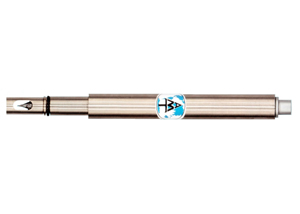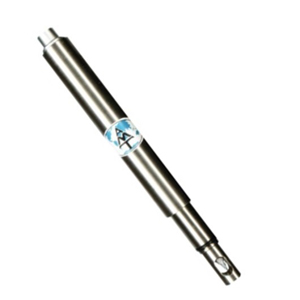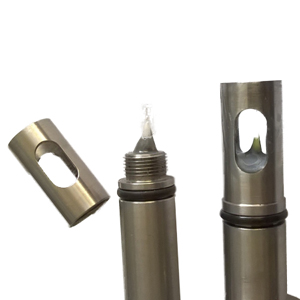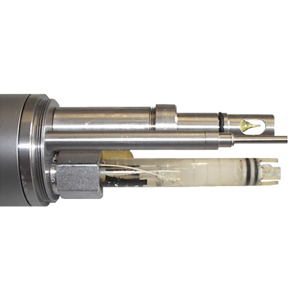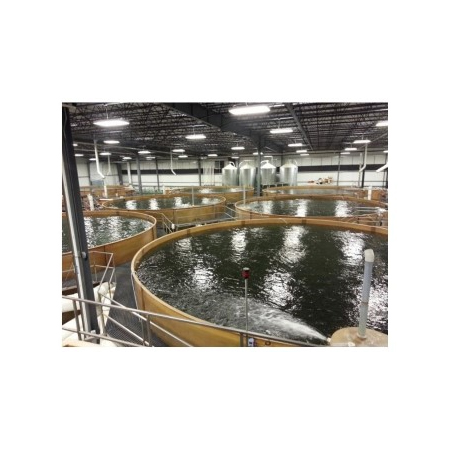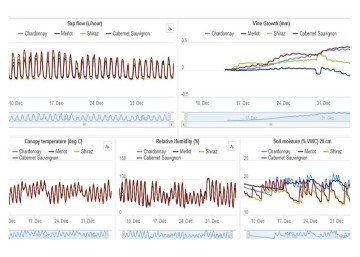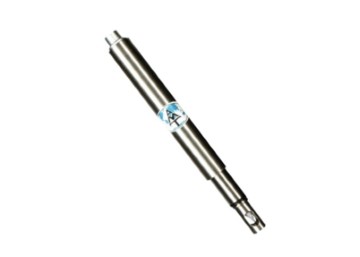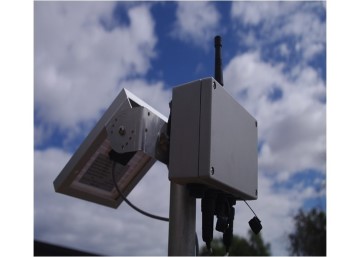hydrogen - shallow water ES-H2-SW
fast in situ depth profiling of dissolved hydrogen with probe systems
overview
The shallow water ES-H2-SW sensor for depths of up to 10 bar consists of a pre-amplifier covered by a titanium housing, a sensitive tip covered by a titanium protection cage and a SUBCONN BH4M connector.
The Hydrogen (H2) Microsensor is ideal for measuring H2 in marine and freshwater for scientific research, water quality, waste water and sewage, or environmental monitoring. The H2 sensor can measure to depths of 100m.
The H2 sensor is supported by our range of remote, telemetry data loggers or we can assist in connecting the sensor to your existing data management system.
The H2 sensor has extremely fast measurement time (approximately 1 second), accuracy of 2%, can measure ow concentrations of H2, and is highly robust.
more details
The amperometric H2 microsensor has been developed for the in situ determination of hydrogen containing aqueous solutions.
The sensor is suitable for direct measurements in coloured and turbid solutions and in sediments.
Compared with all the other commercially available hydrogen sensors, the ES-H2 hydrogen microsensor works with such a low analyte consumption, that streaming of the sensor membrane or stirring of the analyte is not necessary. An additional stirrer is not necessary for stationary measurements.
The second advantage of the microsensor compared to other H2 sensors is the very fast response time of the hydrogen microsensor with t90% below 2 seconds compared with a minimum of approximately 30 to 120 seconds in the case of the conventional sensors.
The third advantage of the new microsensor is based on the microsensor technology. The signal stability of amperometric hydrogen microsensors is essential better. And the high local signal resolution allows some new applications, as for instance the profiling in μm-steps. Besides, measurements in soft sediments or muds became also practicable.
working principle and operation
The ES-H2 operates via the principle of diffusion and partial pressure. Because of the partial pressure of the gaseous H2 dissolved in the sample, the analyte is separated from the inner electrolyte by the membrane. The membrane is hydrophobic, but gas permeable, so that liquids, ions and solids are not able to reach the inner electrolyte or the electrodes of the sensor.
The sensor contains inside a special electrolyte and 3 electrodes. The electrode materials have been chosen and prepared very carefully to realize ideal electrochemical conditions. The time for the polarization, realized by means of the sensors integrated electronic device, is approximately 15 to 30 minutes after the first switching or long breaks. If the hydrogen has passed now the membrane, it is transported by
diffusion to the working electrode followed by the electrochemically oxidation of the H2 . This causes a current depending on the hydrogen partial pressure/hydrogen concentration of the sample. The observed current within a range of 0...400 picoamperes is converted into a voltage of 0...3 Volt inside the integrated electronic device of the sensor.
Besides, in opposite to other measuring principles, the current flow in the amperometric sensor leads to a rapid decrease of the analyte inside
the sensor resulting in very fast response times even though there is a concentration jump from high to low concentrations.
All electrochemical style sensors have to be combined with a temperature measurement and the amperometric hydrogen sensor too. When ordering a multisensor measuring system for laboratory use or a complete submersible probe system, the temperature measurement and the
temperature correction of the sensor signal is already included. If measurements in a flow through system are required, special temperature sensors for the integration in AMT flow through cells are offered. If a calibrated sensor is ordered, the temperature correction is very easy by means of a factor or for more accurate measurements by means of a mathematical formula, delivered with the sensor.
whole system monitoring solutions
Edaphic Scientific is a one-stop shop for a whole system monitoring solution. We provide water quality monitoring systems for researchers and industry.
Our systems not only support dissolved gas sensors, but related sensors such as temperature, weather sensors, and many more.
At Edaphic Scientific we want to work with you from the start of your project through to its completion. We can provide:
- Assistance with project and experimental design
- Procurement of all monitoring equipment, including sensors, data loggers and data management software. Edaphic Scientific is a one-stop shop where we can source and find any necessary equipment for your project from our preferred suppliers or third party suppliers
- Installation and training
- Ongoing assistance with data interpretation and equipment maintenance
- Data correction and analysis, including statistical analysis with the R-package
- Report and publication preparation including tables, figures, graphs, and manuscript writing
advanced data collection and management solutions
 Edaphic Scientific recognises the need for flexible and adaptable sensor and data logging solutions for experimental or environmental monitoring projects.
Edaphic Scientific recognises the need for flexible and adaptable sensor and data logging solutions for experimental or environmental monitoring projects.
Data can be downloaded directly in the field from data loggers. A direct connection between the data loggers and your computer, via a USB cable, can be used for manual downloading of data.
Alternatively, data can be downloaded over the internet on your iPhone, iPad or desktop computer with the Eagle.io cloud-based, data management software solutions. Through this remote based downloading capabilities, you can download, view and manage your data, and system, anywhere in the world and at anytime.
specifications
| feature | specification |
|---|---|
| Measurement Principle | amperometry, membrane covered sensor |
| Accuracy | better than 2% of the measuring value |
| Measurement Ranges | Type I: 0.0002 ... 1 mg/L | Type II: 0,0002....3 mg/L (others on request) |
| Response Time (T90) | < 2 seconds |
| Sensor Lifetime | 5 to 10 months |
| Environmental Tolerance | Temperature: 0°C and 30°C |
| Polarisation Time | 15 to 30 minutes upon initial measurement |
| Stirring Sensitivity | no streaming of the membrane necessary, no stirring of the analyte, very low analyte consumption |
| Power Supply | 9 to 30 VDC |
| Output | 0 to 3 V | SDI-12 with add-on module |
| Sensor Dimensions | diameter: 24 mm | length: 235 mm |
| Housing | Titanium |
| Connector | SUBCONN BH-4-MP (others on request) |
| Cable Length | Standard: 5m (others on request) |
| Depth Rating | 100 m | 10 bar |
manuals & docs
- ES-Hydrogen Microsensor Information
- ES-Hydrogen-SW Hydrogen Shallow Water Datasheet
- ES-Hydrogen-SW Shallow Water Manual

